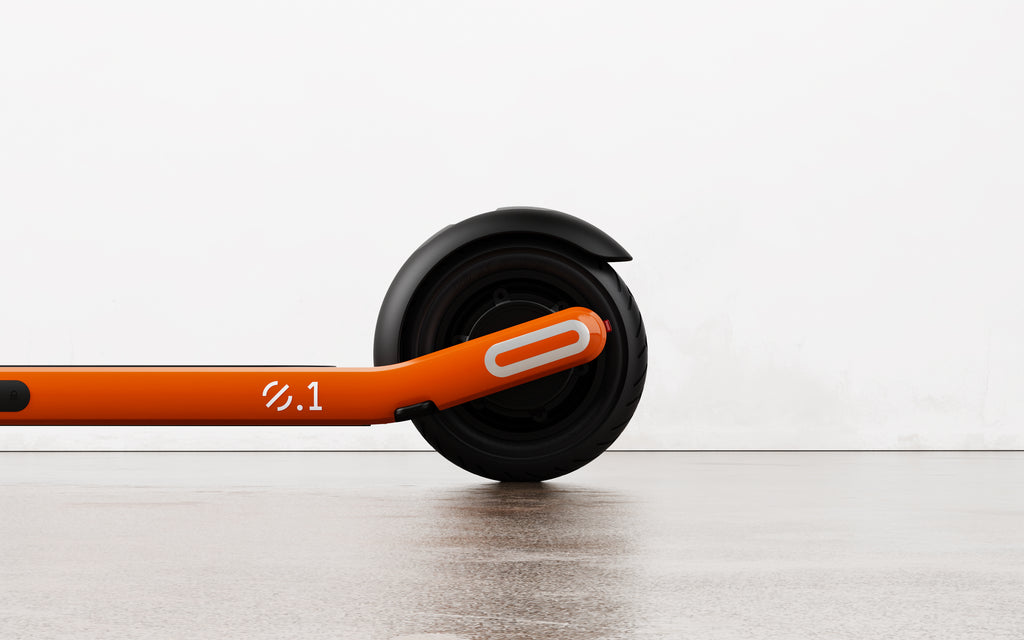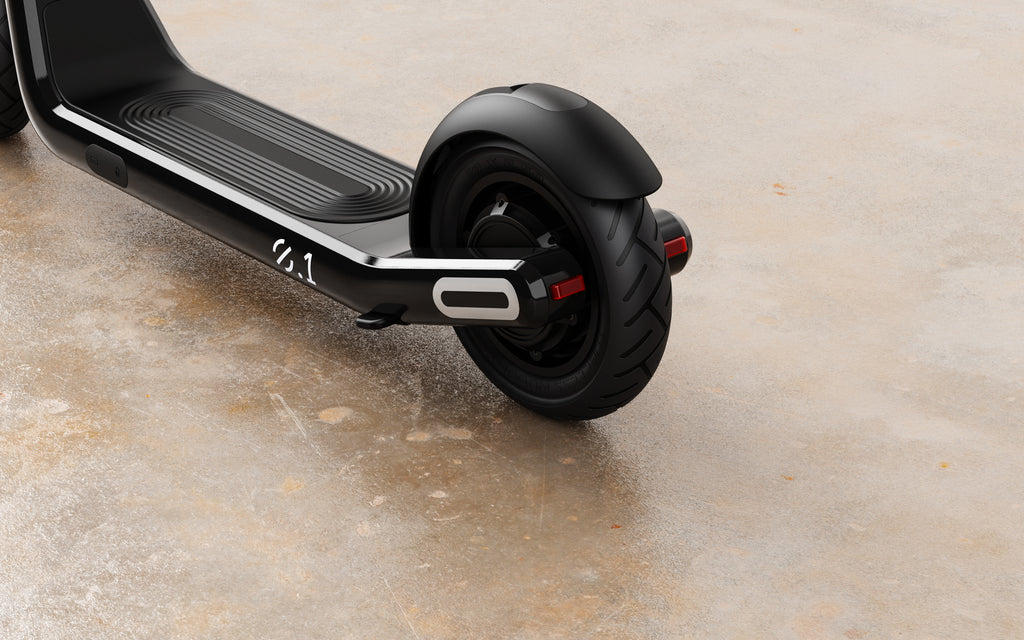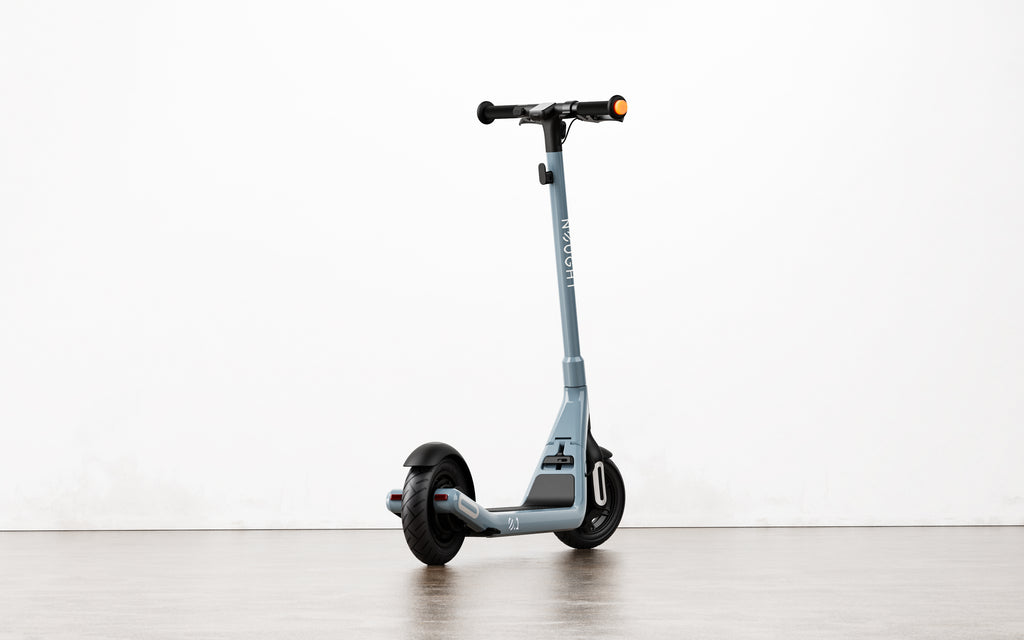With their sleek design and operation, electric scooters are all the rage for eco-friendly urban commuters who care about sustainability (as well as cost-effectiveness). With the rising cost of living, trying to get around can really get you down when the cost of a car, fuel, and maintenance all starts to add up. E-scooters are proving popular as an alternative means of transport though: they’re convenient and super practical for short-distance commutes and urban travel. There is that one question that everyone always asks though: how far can you actually go before needing to recharge? We're going to discuss what electric scooter range you can expect, full charge distance, factors affecting electric scooter range and tips to increase electric scooter range. Let’s get into it.

Electric scooter range is the distance a scooter can travel on a single charge. Of course, as with any vehicle, there’s a limit to how far you can go before ‘refuelling’ and there are various factors that impact that limit as well as things you can do to extend your range. If you want a better understanding of what to expect before buying your own e-scooter, and our top tips to increase electric scooter range, read on.
What we’ll cover
- Understanding e-scooter range
- Factors affecting electric scooter range and full charge distance
- Tips to increase electric scooter range
- Final thoughts on the range of electric scooters

Understanding electric scooter range
When it comes to electric scooters, understanding the concept of range is crucial. The range refers to the maximum distance an e-scooter can travel on a full charge before it needs to be plugged in again. It’s a pretty important consideration for riders, as it directly affects the scooter's usability and convenience.
Let’s imagine for a second that your electric scooter is a hiker embarking on a hike… The water bottle the hiker carries represents the scooter's battery. The larger the water bottle, the more water it can hold, and the longer the hiker can go before needing to refill their bottle. Similarly, an e-scooter with a larger battery can cover more distance before requiring a recharge.
So, just as a fuel tank determines how far a conventional vehicle can go before refuelling, an electric scooter's battery capacity determines its range (full charge distance). But this range can vary widely depending on the scooter's battery, motor, payload, terrain, speed, and riding conditions.

Factors affecting electric scooter range
To optimise your e-scooter's range, several factors come into play:
- Battery size or capacity
- Motor power and efficiency
- Travelling speed
- Rider weight
- Terrain
- External conditions
Battery size or capacity
When it comes to scooters, the battery is the heart that powers your ride. Most electric scooters will use lithium-ion batteries because of their high energy density and efficiency. And battery capacity plays a pivotal role in determining your electric scooter's range and overall performance. It refers to the amount of energy a battery can store and subsequently provide to the motor.
A larger battery capacity translates to a longer range and full charge distance, allowing you to travel further without needing to recharge. If you rely on your e-scooter for your daily commute or longer recreational rides, an extended range is particularly handy. A higher battery capacity provides the freedom to explore more without worrying about running out of power.
It allows you to tackle longer distances and navigate more complicated terrains. So it’s essential to consider the battery capacity when buying an electric scooter – different models will have varying ranges based on their battery specifications. Another thing to consider when choosing an electric scooter is a swappable battery system.
This means that instead of having to wait for the scooter's battery to recharge, you can conveniently exchange your depleted battery for a fully charged one. So, you never have to worry about charging downtime or getting stuck somewhere waiting for your battery to charge. You just have to invest in a versatile e-scooter that’s designed for the batteries to be easily removable and replaceable.
Motor power and efficiency
Another one of the factors affecting electric scooter range is the scooter's motor power and efficiency. Motor power refers to the strength and output of the electric motor that propels your scooter forward. It’s typically measured in watts (W) or kilowatts (kW). A higher motor power means greater acceleration, enabling you to reach higher speeds more quickly.
Electric scooters with more powerful motors often have higher energy consumption, which can reduce the range and full charge distance. However, efficient motor designs can help optimise the e-scooter's performance and maximise the range. Motor efficiency is a measure of how effectively the electric motor converts the electrical energy from the battery into mechanical energy for propelling the scooter.
An efficient motor can perform the same work while consuming less energy, resulting in an extended electric scooter range. Efficiency is influenced by various factors, including the motor design, the quality of components, and the scooter's overall engineering. Think about the appliances in your home, such as refrigerators or air conditioners. You might have noticed they all have energy efficiency ratings…
An appliance with a higher energy efficiency rating consumes less electricity to perform the same task, ultimately reducing your energy bills. Similarly, an electric scooter with a highly efficient motor consumes less energy from the battery, allowing it to travel longer distances on a single charge.
Travelling speed
Speed and acceleration are more factors affecting electric scooter range. Most scooters have an optimal speed range, usually around 10-15 mph, where they achieve the highest energy efficiency and maximum range. Think about it this way… Imagine you're driving on a highway. You're behind the wheel of two different cars: one with a small engine and another with a more powerful engine.
When you accelerate in the car with the powerful engine, it can quickly reach high speeds, but it consumes more fuel in the process. On the other hand, the car with the smaller engine takes longer to reach the same speeds but uses less fuel in the process. Similarly, an electric scooter with a high-powered motor can provide exhilarating acceleration, allowing you to zip through city traffic at speed. However, the increased power consumption associated with quick acceleration and higher speeds can lead to a decrease in the scooter's range.
So, while motor power enhances performance, it's crucial to strike a balance to optimise your electric scooter's range. Riding at higher speeds or frequently accelerating and decelerating can drain the battery more quickly, resulting in a shorter range. Maintaining a consistent speed and avoiding unnecessary acceleration can help conserve energy and extend the scooter's range. A moderate and consistent speed is your best bet to extend your electric scooter's range.
Rider weight
The weight of the rider (plus anything you carry with you) plays a significant role in determining an electric scooter's range and full charge distance. Heavier loads require more energy to propel the scooter forward and maintain speed, potentially reducing the overall distance that can be covered on a single charge. So, while an e-scooter brand and model will state what range it’s able to achieve, this is more of a general guideline.
Lighter riders will experience longer ranges since less energy is required to move the scooter, while heavier riders will put more strain on the electric scooter's motor, which drains the battery more rapidly, resulting in reduced range. This is something to bear in mind when choosing which e-scooter to buy – manufacturers will specify weight limits so choose a model that comfortably accommodates your weight to optimise your range.
Terrain
In the same way that a lighter or heavier weight can impact an electric scooter’s range, the terrain you travel on can present more or less of a challenge to your range. When riding on smooth, flat terrain with minimal inclines, such as city streets or bike lanes, you can expect to achieve the maximum range advertised by the manufacturer. The absence of steep hills reduces the energy demand, allowing you to cover longer distances before needing to recharge.
Uphill climbs, steep inclines, or rough off-road terrains, on the other hand, are much less energy-efficient, and demand more power from the scooter's motor, reducing its range. When navigating hilly or uneven terrains, the motor has to work harder to overcome the increased resistance, consuming more energy, and reducing the scooter's range.
Think of riding an electric scooter on hilly terrain as similar to hiking up a mountain. Climbing uphill demands more effort and energy expenditure compared to walking on flat ground. In the same way, an e-scooter travelling uphill will consume more power and have a shorter range than when riding on flat surfaces. Some electric scooters are designed to handle inclines better than others though – they might be designed for off-road challenges, have a more powerful motor, or even a specialised climbing mode to minimise energy expenditure.
External conditions
Environmental factors, road conditions, headwinds, extreme temperatures, and weather conditions are also factors affecting electric scooter range. And did you know that in bustling urban environments, frequent stops at traffic lights and intersections can impact your scooter's range and full charge distance? The constant acceleration from a standstill consumes more energy, so you may experience a slightly shorter range compared to riding on uninterrupted routes.
Adverse weather conditions such as strong headwinds or riding in heavy rain can also affect your electric scooter's range. Wet surfaces can decrease traction and efficiency. Riding against increased wind resistance requires the motor to exert more power, resulting in higher energy consumption and reduced range. Conversely, riding with a tailwind can enhance efficiency and increase your scooter's range. And if you add in extreme temperatures (hot or cold), that can also influence the performance and range of a scooter.
In colder climates, the battery's chemical reactions may slow down, reducing its efficiency and overall range. Think of your e-scooter as you would your smartphone. Just like smartphones tend to drain their batteries faster in cold weather, electric scooter batteries can experience reduced efficiency and range during winter months. Similarly, in hot weather, excessive heat can cause the battery to discharge more quickly.

Tips to increase electric scooter range and full charge distance
While you can’t control external conditions, you can take steps to optimise your electric scooter's range and ensure longer rides between charges. Here are some practical tips to increase electric scooter range:
- Reduce weight load
- Plan your routes
- Ride smart, not hard
- Activate eco mode
- Check tyre pressure
Reduce weight load
The first of the tips to increase electric scooter range is to keep your scooter as lightweight as possible. Remove any accessories or items that aren't essential for your ride and leave behind bulky backpacks if you can. Remember, less weight means less strain on the motor and battery, resulting in increased efficiency and a notable difference in your e-scooter's range.
Plan your routes
Hilly areas, with their constant inclines and declines, put a strain on the motor and drain the battery more quickly. So, plan your routes to avoid excessive inclines whenever possible. Opt for flatter terrains and smoother surfaces, such as bike paths or well-maintained roads.
Ride smart, not hard
Adjust your riding style if you need to. Think consistent speeds, avoid sudden accelerations, aggressive manoeuvres, and sudden stops, and maintain a moderate pace. You could also try coasting whenever possible, especially when you’re going downhill or when you have momentum, to help conserve energy.
Activate eco-mode
Most electric scooter brands come equipped with an eco mode – a feature designed to conserve energy and maximise battery life. Activating eco mode adjusts the scooter's performance settings to reduce power output, resulting in a slower but more energy-efficient ride. It’s definitely something to consider if you want to stretch your e-scooter's range.
Check tyre pressure
Overinflated or underinflated tires can lead to increased rolling resistance (and decreased efficiency). To ensure optimal performance, another one of our tips to increase electric scooter range is to regularly check your scooter's tyre pressure and inflate them to the manufacturer's recommended levels. Properly inflated tires will roll more smoothly, reduce drag, and improve battery efficiency, resulting in a longer range and full charge distance.

Final thoughts on factors affecting electric scooter range
Electric scooters have taken urban commuting by storm, providing an emission-free, fun, and efficient way of getting from A to B. To make the most of it though, you need to understand what it’s capable of when it comes to range and the factors that impact your full charge distance. You’ve got to strike the right balance between power and efficiency to optimise your energy usage if you want to extend your range for longer journeys.
Factors such as battery capacity, motor power, rider weight, speed, flat or hilly terrain, and adverse weather conditions all influence the distance you can travel on a single charge. To maximise your electric scooter range, it's important to optimise your riding style, minimise unnecessary weight, use eco mode, practice smart riding habits, and plan your routes ahead of time.
With these practical tips to increase electric scooter range in your rider’s toolbox, hopefully you can increase your scooter's range, make the most of every charge, and enjoy extended rides without worrying about running out of battery. Happy riding!





